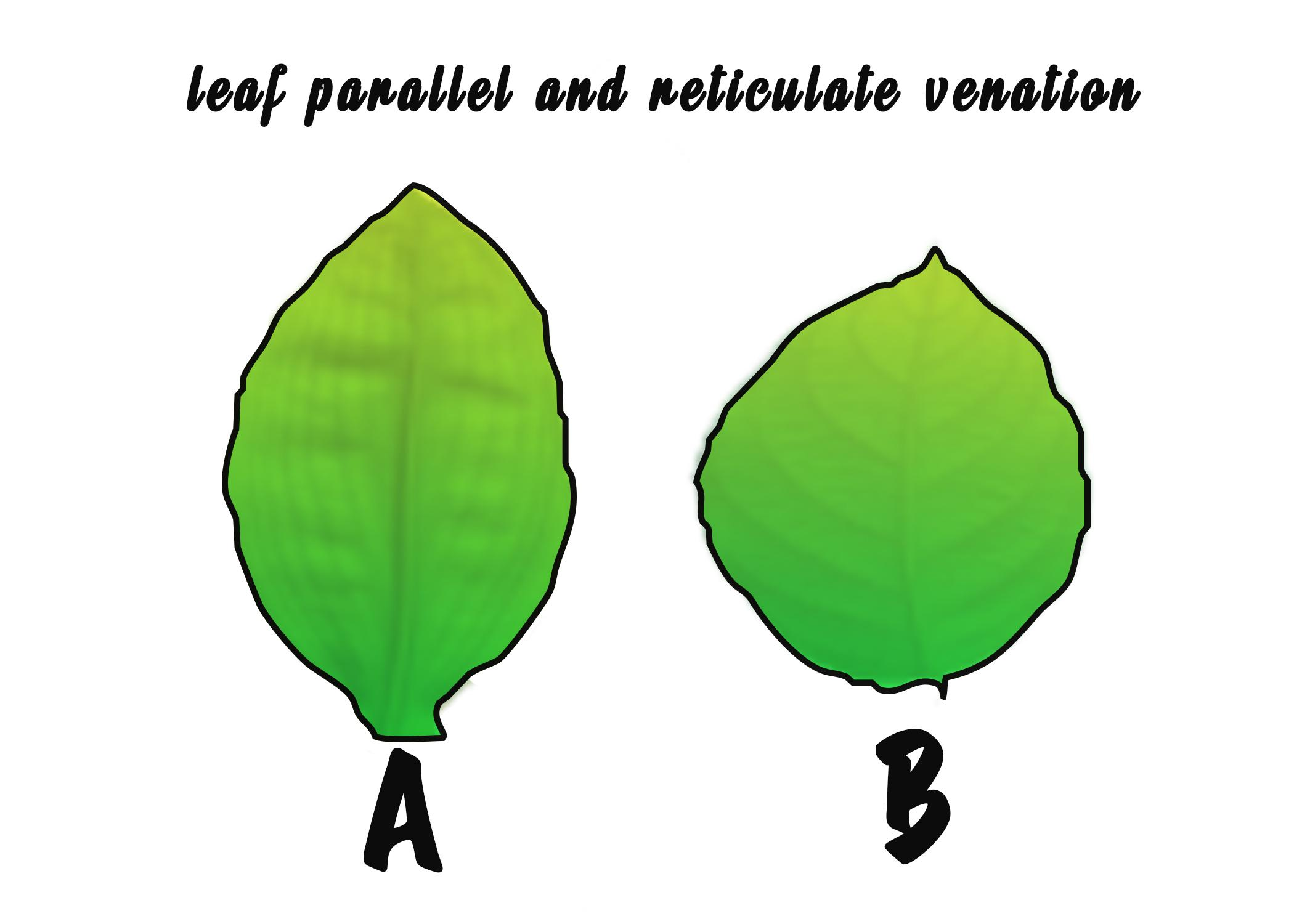
Please state if True or False: B represents reticulate venation.

(a) True
(b) False

Answer
555k+ views
Hint: The term reticulate refers to the net or web-like appearance on a surface and venation refers to a pattern of veins. As we see in the figures, figure A has a network of veins on the surface while figure B shows a pattern of parallel veins.
Complete answer:
- Figure A shows a reticulate venation while figure B shows parallel venation.
- The vascular tissue in every leaf forms veins. The arrangement of veins on the leaf is called the venation pattern.
- In reticulate venation, the lateral veins in the lamina of the leaf divide and redivide to form veinlets, forming a net like appearance.
- In parallel venation, the veins and veinlets run parallel to each other in straight lines without converging.
- Apart from the transport of water and nutrients, venation also provides mechanical support, protection, coordination in the development of the plants.
Additional Information:
- Reticulate venation is a feature of dicot plants, for eg., ficus, while parallel venation is a feature of monocot plants, like grass.
- The veins are composed of xylem and phloem, enclosed in the parenchyma, sclerenchyma and bounded by the sheath cells.
- Both reticulate and parallel venation are of two types: pinnate parallel venation where one main midvein is present and palmate parallel venation where multiple mid veins are present..
So, the statement is ‘(b) False’.
Note:
- Leaves of Ginkgo biloba show dichotomous venation. The veins are forked and each vein divides at intervals into smaller veins of approximately equal size.
- Venation is generally a feature of angiosperms.
Complete answer:
- Figure A shows a reticulate venation while figure B shows parallel venation.
- The vascular tissue in every leaf forms veins. The arrangement of veins on the leaf is called the venation pattern.
- In reticulate venation, the lateral veins in the lamina of the leaf divide and redivide to form veinlets, forming a net like appearance.
- In parallel venation, the veins and veinlets run parallel to each other in straight lines without converging.
- Apart from the transport of water and nutrients, venation also provides mechanical support, protection, coordination in the development of the plants.
Additional Information:
- Reticulate venation is a feature of dicot plants, for eg., ficus, while parallel venation is a feature of monocot plants, like grass.
- The veins are composed of xylem and phloem, enclosed in the parenchyma, sclerenchyma and bounded by the sheath cells.
- Both reticulate and parallel venation are of two types: pinnate parallel venation where one main midvein is present and palmate parallel venation where multiple mid veins are present..
So, the statement is ‘(b) False’.
Note:
- Leaves of Ginkgo biloba show dichotomous venation. The veins are forked and each vein divides at intervals into smaller veins of approximately equal size.
- Venation is generally a feature of angiosperms.
Recently Updated Pages
Master Class 11 Business Studies: Engaging Questions & Answers for Success

Master Class 11 English: Engaging Questions & Answers for Success

Master Class 11 Computer Science: Engaging Questions & Answers for Success

Master Class 11 Social Science: Engaging Questions & Answers for Success

Master Class 11 Maths: Engaging Questions & Answers for Success

Master Class 11 Biology: Engaging Questions & Answers for Success

Trending doubts
Differentiate between an exothermic and an endothermic class 11 chemistry CBSE

10 examples of friction in our daily life

One Metric ton is equal to kg A 10000 B 1000 C 100 class 11 physics CBSE

Difference Between Prokaryotic Cells and Eukaryotic Cells

State the laws of reflection of light

Explain zero factorial class 11 maths CBSE




